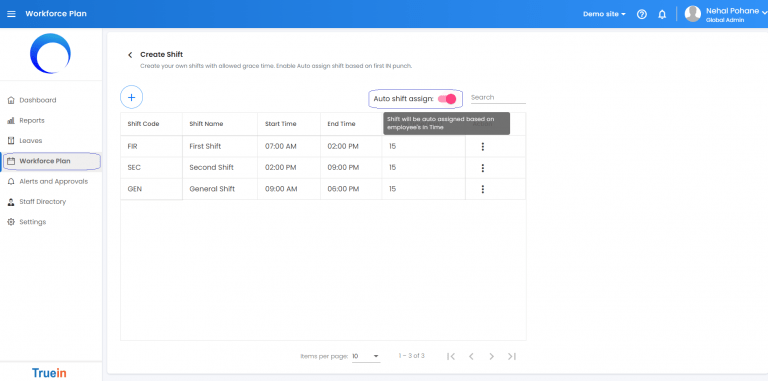Businesses that are always open/functional have different governance requirements. Running a business 24/7 requires you to maintain a 24-hour shift schedule. It demands the availability of workers at work at all times, prompting scheduling challenges.
An easy solution seems to confide in night shifts, but it can demoralize the workforce if they are scheduled to work night shifts. The secret of successful shift schedules for 24/7 coverage lies in equity.
You have to figure out how to swap and rotate 24-hour shifts that do not leave your employees mentally or physically exhausted. Also, the best shift schedule for 24/7 coverage has the flexibility to accommodate changes in production peak.
Table of Contents
Things to consider before creating a 24 hours shift schedule schedule
Before we share tips on making a 24-hour shift schedule, it is essential to understand the requirements. Shift schedules are never one-fits-all; you have to consider the unique needs of your business. Here are the vital factors.
1. The business type
Different businesses have different requirements. For instance, a 24-hour shift schedule is common in restaurants, hospitals, manufacturing, and construction businesses. However, all these businesses differ significantly in terms of skills and the number of workers required.
Why you want to maintain a 24/7 work routine will decide the schedule structure. Hospitality and medical categories need staff in lesser numbers as compared to construction and manufacturing industries.
2. Number of employees
The maximum number of workers you can hire and maintain will decide how to plan the shifts for round-the-clock timing. For instance, if your organization has only 30 employees and your business model requires at least 15 workers to be present in one shift, then for a 24-hour work schedule, you will need two 12-hour shifts.
3. Coverage requirements
If your business has rush hours, like in restaurants or over a certain period, the production at your manufacturing unit peaks, and you will need more than the required number of workers. Again, you must consider the coverage requirements before planning the final 24-hour schedule.
If the peak hours are not regular, like in restaurants, you can decide to go with contractual workers for a specific period.
4. Shift duration
The best shift schedule for 24/7 coverage is one that minimizes overtime costs. You have to work out a schedule plan such that the overtime is under control. We already have a great resource for managing overtime and creating an excellent employee overtime policy.
Here the goal should be to limit the length of each shift to 8 hours to avoid overtime. You can extend the shift duration to 10 or 12 hours if there are not enough employees to cover the 8-hour shift scheduling. Also, if your cover requirements demand more work hours, you can extend the shift period.
5. Time Off
The problem with operating your business 24 hours a day, seven days a week, is that you might have revenue flowing in, but it is easy to forget about the staff. Your workers are not there to work 24/7 and need time off. After the payment, workers’ primary concern is when and how they will get the time off.
Most employees working night shifts expect time off to complete their sleep or take mini-vacations. You can consider offering employees at least one of the weekends off during night shifts so they can catch up with their family and friends. Also, there are labor compliance requirements around 24/7 work shifts, don’t forget to consider those.
Managers must understand the difference between a reasonable ask – mandating workers to work in a particular schedule – and putting workers at risk of burnout, fatigue, absenteeism, or poor performance.
As manager scheduling shifts, you must be mindful of working in shifts’ physical and emotional stresses.
Now that you understand what requirements must be examined before creating shift schedules for 24/7 coverage, we will explore the most commonly implemented shift patterns for 24/7 coverage.
Four 24-hour shift schedule examples
1. Fixed shifts
It’s the easiest route to maintain a specific shift. In fixed shifts, employees will always work the same shift they are put into. When you retain fixed shifts, you can hire and staff the shifts per the business’s demand. If there is a spike, you can hire part-time workers to fill the void.
Fixed shifts are easy for managers to maintain, and some employees prefer them because their biological cycles are not disturbed by frequent changes between days and nights. Even customers will get used to dealing with the same employees at the same time of the day.
The problem is if any worker is not satisfied with their shift, they will not be able to request a change. Fixed shifts work well for businesses of any size; however, you must maintain more than the minimum number of employees. Because employees will need time off in fixed schedules and you will need extra workers to cover the shift.
2. Rotating shifts
Rotating shifts are more equitable as they allow employees to work in different shifts rotating after several weeks. No employee gets the “good” or “bad” shifts here, and every worker has to work day, night, and afternoon shifts.
There are several variations of the 24-hour rotating shift. You can keep the rotation constant; for instance, the shift changes weekly. However, this can be hard on employees as their bodies continuously try to adapt physically and mentally.
As the title suggests, a slow 24-hour rotating shift rotates slower, sometimes over months, so that employees can adapt to the shift change. Most restaurants and hospitality businesses maintain weekend rotation, where employees take a turn working weekend shifts.
It is common in smaller firms where there is not enough staff. Finally, some businesses maintain partial rotating shifts where some employees have fixed shifts while others rotate.
3. Swing shifts
Swing shifts are for businesses where a steady output or coverage is inevitable, like in the manufacturing and mining sector. In the swing method, shift schedules for 24/7 coverage have different starting and stopping points. Employees don’t have to stick to a set start-stop time.
For example, instead of the usual 8-4, 4-12, and 12-8 shifts, the schedule can be 9-5, 11-7, and so on. Swing shifts are also implemented where an employee must be available to carry over one shift to the next. It makes shift transition smoother, like powerhouses or employees handling CNC machines in a manufacturing unit.
However, keep in mind that swing shifts require more employees due to many staggered shifts.
4. DuPont Shift Schedule
The DuPont 12-hour rotating shift pattern requires four teams who will work in two 12-hour shifts to provide 24-hour coverage.
Here, you are required to maintain a 4-week cycle where each team works 4 consecutive night shifts, followed by 3 days off duty, then 3 consecutive day shifts, followed by 1 day off duty. 3 consecutive night shifts follow this, and then 3 days off duty, works 4 consecutive day shifts, and 7 consecutive days off duty.
In total, on average, workers work 42 hours per week in DuPont’s 24-hour shift schedule. One of the greatest per of this shift pattern is that employees get a week off each cycle.
Automatic shift scheduling with Truein
Without a doubt, managing a 24-hour shift schedule can be complicated. If HR managers are left with manual tools to make a 24-hour shift schedule, it can take a lot of resources and time. As you have to manage not only who is working but also at what times of the week they will be working, things can get tedious quickly.
Truein is a complete attendance solution based on cloud infrastructure. It is a hardwareless time and attendance system that uses AI for intelligent shift scheduling. It helps to create shift patterns for 24/7 coverage. Managers can track workers in real-time.
They can view the availability of the shifts for a particular shift to make the work schedule faster and easier than ever before. Plus, it offers premium scheduling controls such as auto assigning shifts to available staff in case there is a shortage of workers.

You can view the full image here.
Schedule a free demo today and try Truein a complete leave and attendance management software that can easily integrate with payroll software and save your time and resources.
“Get centralized and foolproof Time & Attendance for your organization”
Book a Free Demo Now
Conclusion
With efficient shift schedules for 24/7 coverage, you can control labor costs, keep productivity high, maximize revenue, and keep employees happy. We hope this guide gave you enough information on how to make a 24-hour shift schedule.
















